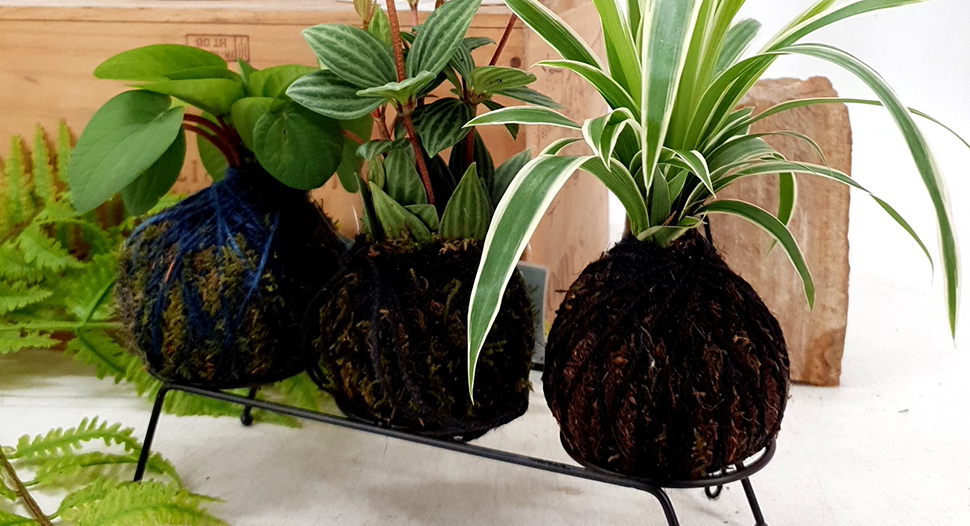Look beyond its unique name and you’ll find that kokedama is a centuries-old Japanese garden art form worth rediscovering!
In fact, its name is a literal translation: “koke” and “dama” mean moss and ball respectively!¹ Kokedama is a type of Japanese bonsai (盆栽) — potted miniature trees artistically shaped to achieve an aesthetic effect — but it often goes by another name. Many people also know it as the “lazy man’s bonsai” because it’s much simpler to care for and news less time and effort than a regular Japanese bonsai!
Connect with nature in a unique way and learn more about the art of kokedama: top 5 plants, styling and care tips!
Health benefits of kokedama
Kokedamas are not only aesthetically pleasing, but they can also positively impact your physical and mental wellbeing.
- Purifies the airThere are a number of scientific studies that prove such houseplants can remove toxic substances in the air we breathe. This is particularly beneficial indoors where it can be up to 10 times more polluted than outdoor environments due to air-conditioning and reduced air exchange². Kokedama houseplants will dissolve these substances and transform carbon dioxide into life-giving oxygen!Suitable air-purifying houseplants for kokedama include:Fern (maidenhair and bird’s nest): Removes formaldehyde, a substance that can be found in the living spaces of new or renovated homes
Palms: Removes mould from the air in damp areas (eg. toilet)
Fittonia (nerve plants): Absorbs and eradicate toxins like benzene, toluene, xylene, and nitrogen dioxide. - Relieves stress
Contrary to their small and adorable appearance, the Japanese believe that these moss balls are real heavy-lifters when it comes to your mental health. Kokedamas may ward off stress by absorbing any bad energy in your home, which in turn offers peace for your mind, body and soul⁴!
How to choose a kokedama
The choice of plant growing on your kokedama will affect where it can be placed.
Beginners can start with a small, low-maintenance plant so that the kokedama can last longer. Succulents that can tolerate drier air such as pathos, philodendrons and even the Pilea Polybotrya (Chinese money plant)⁵ are great even in rooms where the air-conditioning may be used occasionally.
Looking to place your kokedama outdoors instead? You can go with ferns such as maidenhair (Adiantum), nerve plants (fittonia) or baby’s tears (Soleirolia soleirolli).
These trendy moss balls can be placed on a decorative tray or plate, fixed onto driftwood, or hung from the ceiling. When you hang up many kokedama, you have a string garden! This trendy and unique form of decoration gives any interior dimension and a mystical effect.
How to care for a kokedama
Depending on the plant type and species, kokedama care requirements will vary. These are the most crucial areas of care:
1. Watering
You’ll know when a kokedama needs some hydration when it feels dry to the touch or light when you pick it up. This can be done once a month and there are two ways to do it: soaking or misting.
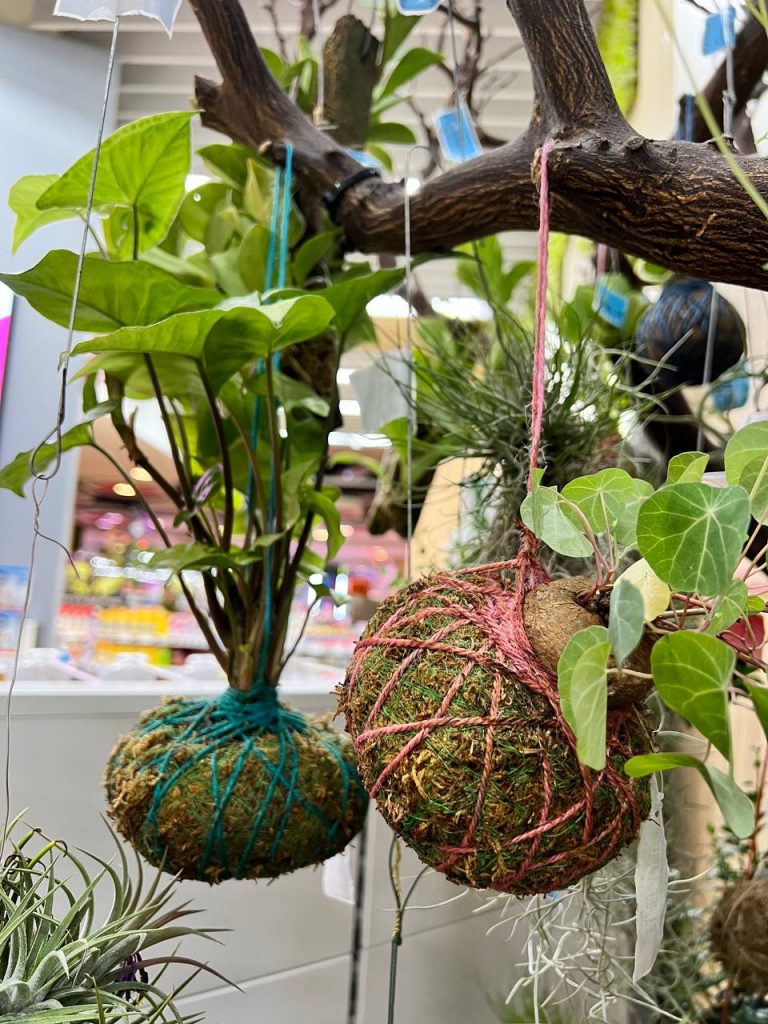
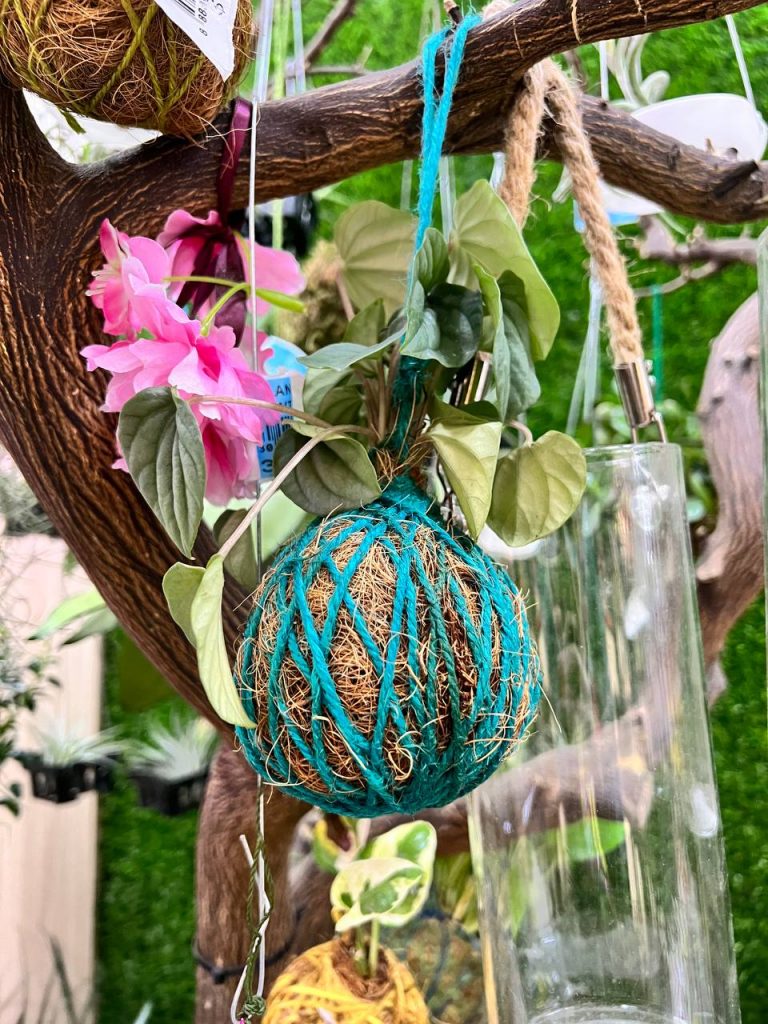
Soaking: Submerge your kokedama in a bowl or bucket of room temperature water fully. Wait for 15-20 mins or until the ball feels heavy, then squeeze any excess water gently. Allow it to drip dry before putting it back on display!
Misting: Complement soaking with some good ‘ole misting. Use a bottle that casts a fine spray of water on and all around tropical plant foliage once or twice a week⁵. Succulents don’t need frequent misting — even the monthly soak is just fine.
As many plant lovers can attest, the act of misting can be rather therapeutic. Nothing beats a moment of silence as you spray love and care all over your foliage!
2. Feeding
In addition to watering, kokedamas will need to be fertilised at least once a month.
You can do this while you’re soaking the kokedama: simply stir in the necessary amount of liquid plant food⁶ and you’re done!
3. Leaf browning
Like all other plants, kokedamas will not benefit from over-watering.
To complement the once-a-month soak, allow for a few days between each mist so that the soil ball is not too moist, but never completely dry. Leaf browning is an indication of:
Over-watering
Brown and mushy leaves or stems. The leaves may also appear slightly yellow, and the stems stained black.
Under-watering
Distinct browning and crisping around the leaf’s edges.
How to trim a prospering kokedama
It is important to note that your plant can outgrow a kokedama even with proper care. When this happens, you can simply trim any overgrown foliage.
Fix any roots growing through the moss by just taking the kokedama down.
Remove or add more soil, moss or replace the string with heavy-duty twine so that it can last longer.
***
We hope that you’ve learnt something new about kokedama, as well as how to care for it properly so you can keep these pretty and trendy, but capricious plants alive for longer to adore!
If you need any help, you can simply approach any of the friendly staff at the plants and flowers section at selected FairPrice Finest or FairPrice Xtra stores where kokedamas are sold! They’ll be able to assist and answer any queries that you may have.
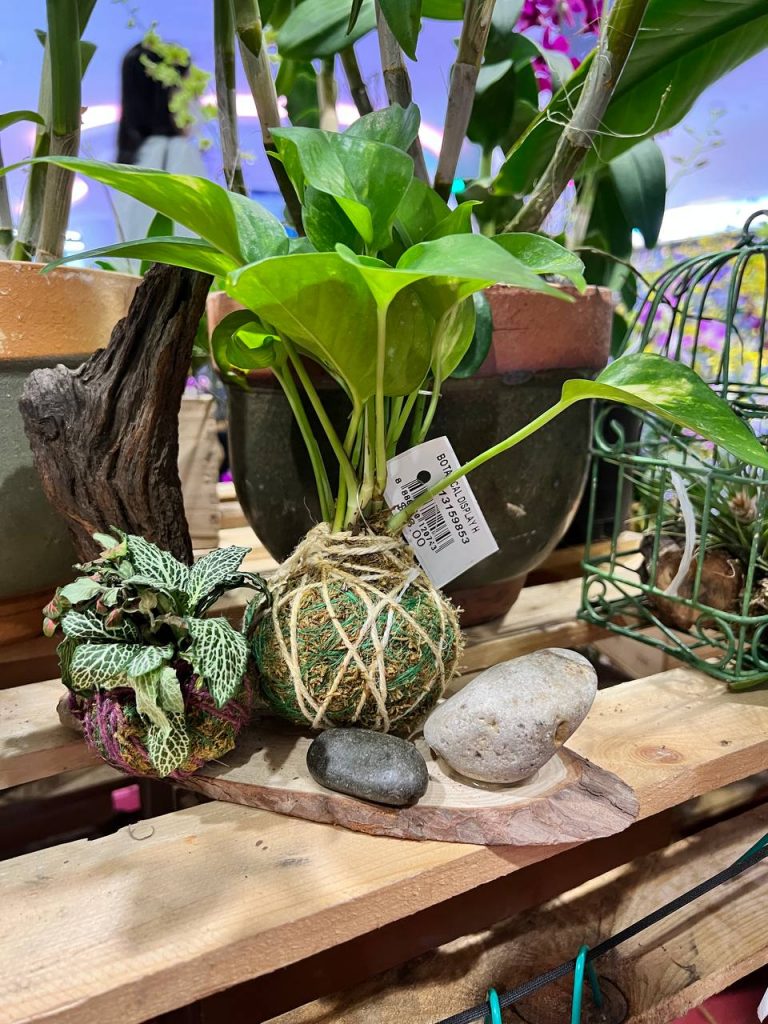
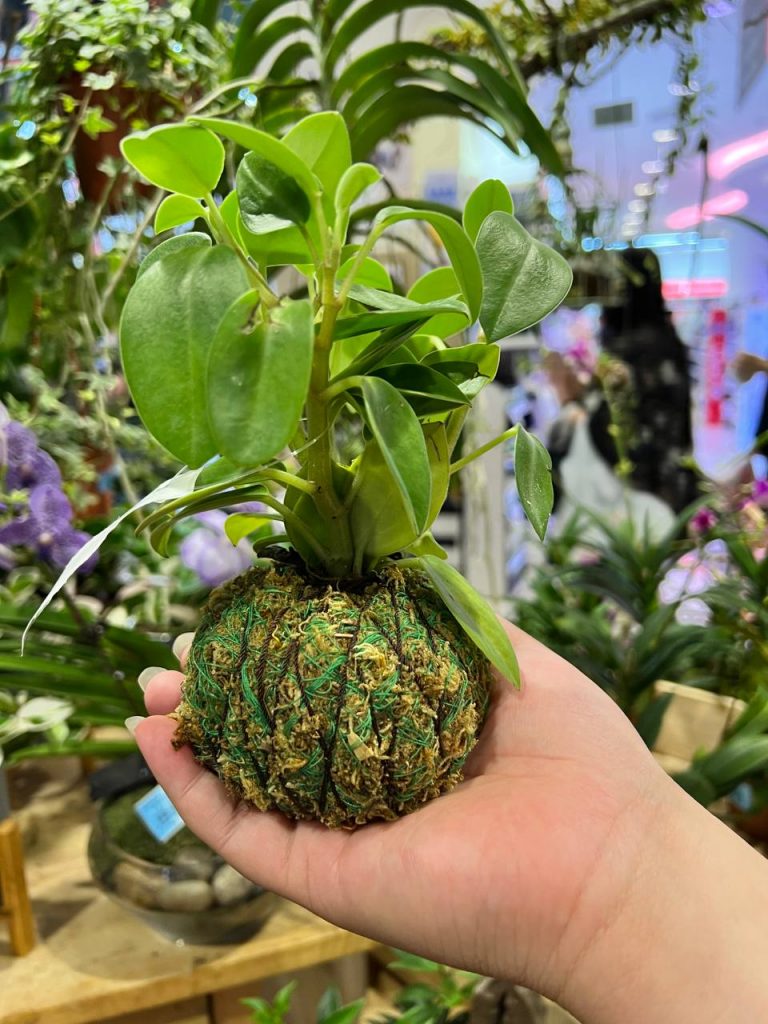
References:
¹ L. Grant, B 2021, What is a kokedama: tips on making kokedama moss balls, Gardening Know How, viewed 23 August 2022
² Tranquil Plants 2022, The benefits of fresh air kokedama plants, viewed 23 August 2022
³ ProGardenTips 2022, 7 fittonia plant (nerve plant) benefits, Elite CafeMedia Home/DIY Publisher, viewed 23 August 2022
⁴ Kokedama India 2021, Benefits of kokedama, viewed 23 August 2022
⁵ Iseli, D 2022, The 13 very best plants for kokedama — revealed!, Plantophiles, viewed 23 August 2022
⁶ Leafscape 2022, Caring for kokedama plants, viewed 24 August 2022
